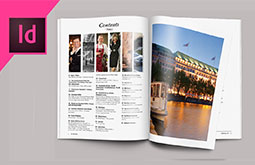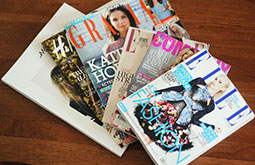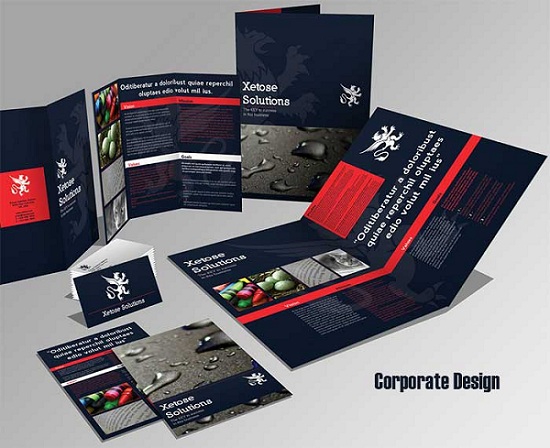Business Card Dimension Size Guide in Inches and Centimeters
A creative and custom business card design is one of the main branding materials for all kinds of businesses. Choosing the right business card dimensions is critical for design alignment, readability, print compatibility and card-holder compatibility.
As standard sizes vary from region to region, understanding the differences helps designers create professional, eye-catching cards. To help you out, we’ve prepared this guide about standard and custom business card sizes, including measurements in inches, centimeters, millimeters and pixels, along with design tips to make your card stand out.
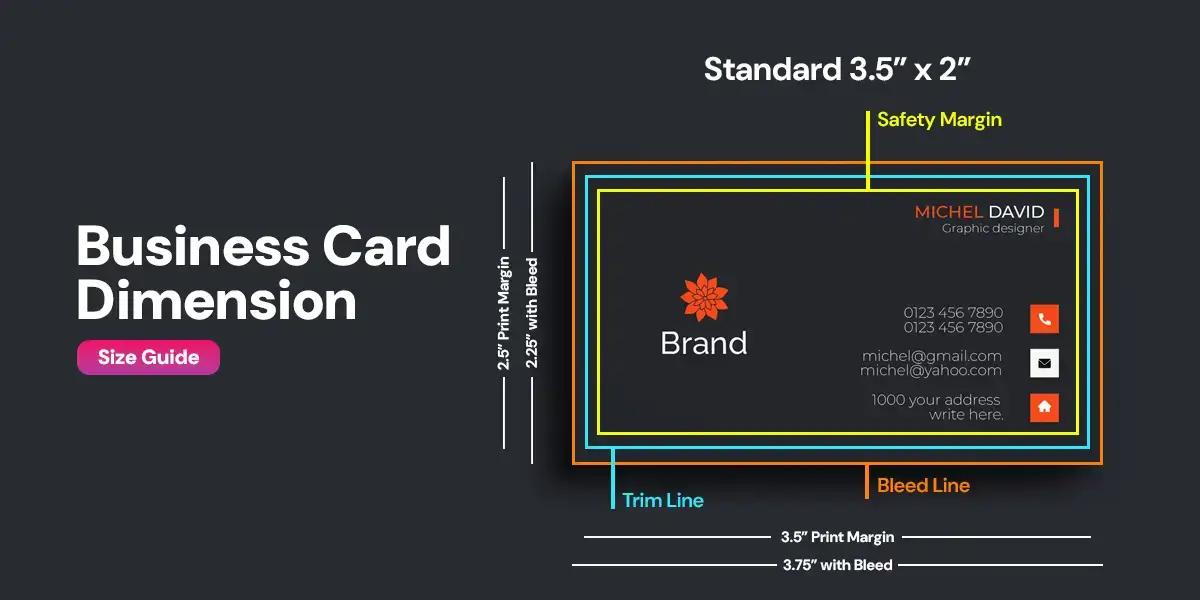
Key Takeaways:
- Standard US/Canada size: 3.5” x 2” | 8.9 x 5.1 cm | 89 x 51 mm | 1050 x 600 px
- Custom sizes: Examples include square 2.5” x 2.5” | 6.35 x 6.35 cm | 64 x 64 mm | 750 x 750 px, or foldable 3.5” x 4” | 8.9 x 10.16 cm | 89 x 102 mm | 1050 x 1200 px
- Rounded corners or unique shapes: Add differentiation while keeping practical size in mind
- Bleed areas: Always include 0.125” (3 mm) extra space to avoid cutting errors
Standard Business Card Dimensions around the World
The standard dimensions for business card printing differ from one country to another. For example, in the United States and Canada, the standard size can be 3.5” x 2”. However, for other countries, it might not be the same.
Here, 3.5” x 2” is the finished size. But, it may also contain a bleed area that can be trimmed out later. The bleed area is a safe space usually left out to be trimmed down during the business card design.
Now, let’s take a look at the standard business card sizes in various countries.
| Country | Card Size | Aspect Ratio | |||
|---|---|---|---|---|---|
| Inches | Centimeters | Millimeters | Pixels | ||
| Canada, United States | 3.5” × 2 | 8.890 x 5.080 | 89 × 51 | 1050 x 600 | 1.75 |
| United Kingdom, Western Europe | 3.346” × 2.165” | 8.498 x 5.499 | 85 x 55 | 1003 x 649 | 1.545 |
| India, Russia, Eastern Europe | 3.543” × 1.968” | 8.999 x 4.998 | 90 x 50 | 1062 x 590 | 1.8 |
| Japan | 3.582” × 2.165” | 9.098x 5.499 | 91 x 55 | 1074 x 649 | 1.655 |
| China | 3.543” × 2.125” | 8.999 x 5.397 | 90 x 54 | 1050 x 637 | 1.667 |
| Australia, Oceania | 3.54” × 2.165” | 8.999 x 4.998 | 90 x 55 | 1062 x 590 | 1.636 |
| ISO/IEC 7810 ID-1, (credit card size) | 3.370” × 2.125” | 8.559 x 5.397 | 85.60 x 53.98 | 1011 x 637 | 1.586 |
| ISO 216, A8 sized | 2.913” × 2.047” | 7.399 x 5.199 | 74 x 52 | 873 x 614 | 1.423 |
| ISO 216, B8 sized | 3.465” × 2.441” | 8.779 x 6.198 | 88 × 62 | 332 x 234 | 1.419 |
| ISO 216, C8 sized | 3.189” × 2.244” | 8.099 x 5.698 | 81 x 57 | 306 x 215 | 1.421 |
Understanding types of business card dimensions
So how big are business cards? What you should note that is that there is no specific rule with regard to size of business card or there’s nothing that you can define as a standard business card size. So this means that you can go your own way and create your own business card dimensions. One most important aspect to remember is your business will feature your contact information. Thus, you have to be extra careful about the alignment and fitment. When you choose to create your own business card with unique dimensions and colors, you would make your business card stand out from the crowd. However, when you think outside the box, you may need to take special measures to ensure that you address the downsides well and reap the benefits of unique business card design.
-
Standard Sizes
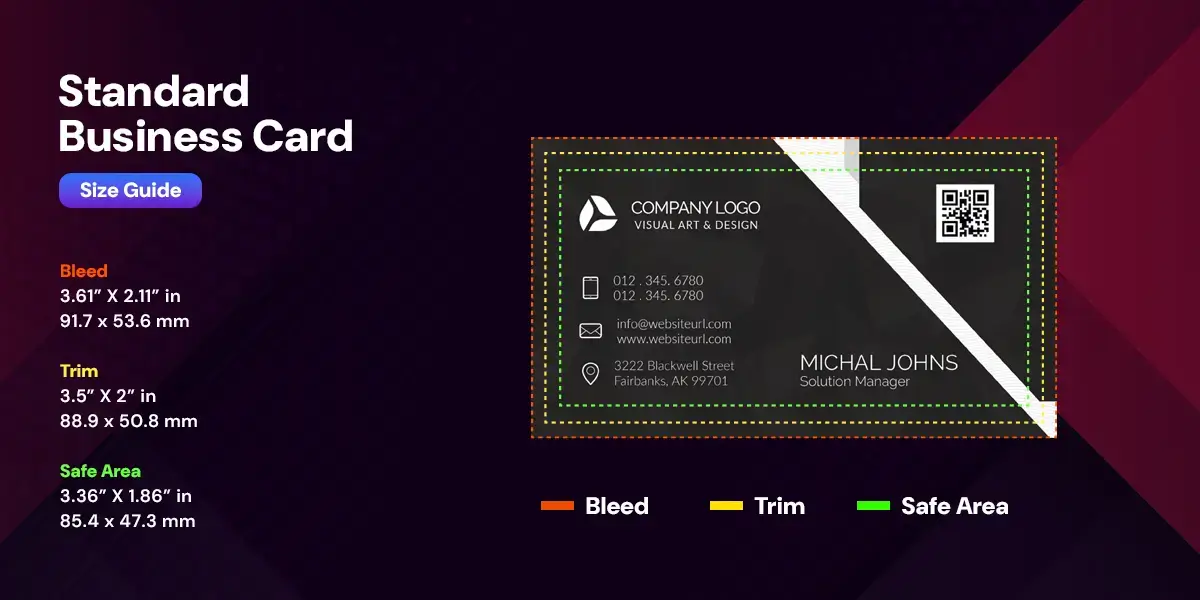
A standard business card is a small rectangular card used for professional networking, providing contact details and branding information. This size is the most compatible with wallets and cardholders, therefore practical for everyday use. Internationally, the sizes considered “standard” can vary, but they are most commonly sized 3.5 x 2 inches (or 89 x 51 mm). For example, standard-size business cards have a dimension of 3.5” x 2” inches, or 8.9 cm x 5.1 cm, in the USA and Canada, whereas in Japan, the measurements are 3.582” × 2.165” inches, or 9.1 cm x 5.5 cm. The standard card-size is 3.346” × 2.165” in France, Ireland, Belgium, United Kingdom, Portugal, Germany, Slovenia, Turkey, Belgium, Switzerland, Netherlands, and Italy.
The best part of keeping a business card of this size is to benefit from the print-ready format and affordability of print pricing.
Rounded Corner

Rounded corner business cards have smooth, curved edges in place of the usual sharp, straight, pointed corners seen in standard cards. Rounded corners add a soft, modern and sophisticated look to business cards. They are generally the same size as standard business cards (3.5 x 2 inches or approximately 89 x 51 mm) but are more durable because the corners don’t bend or fray as time passes.
Square Cards
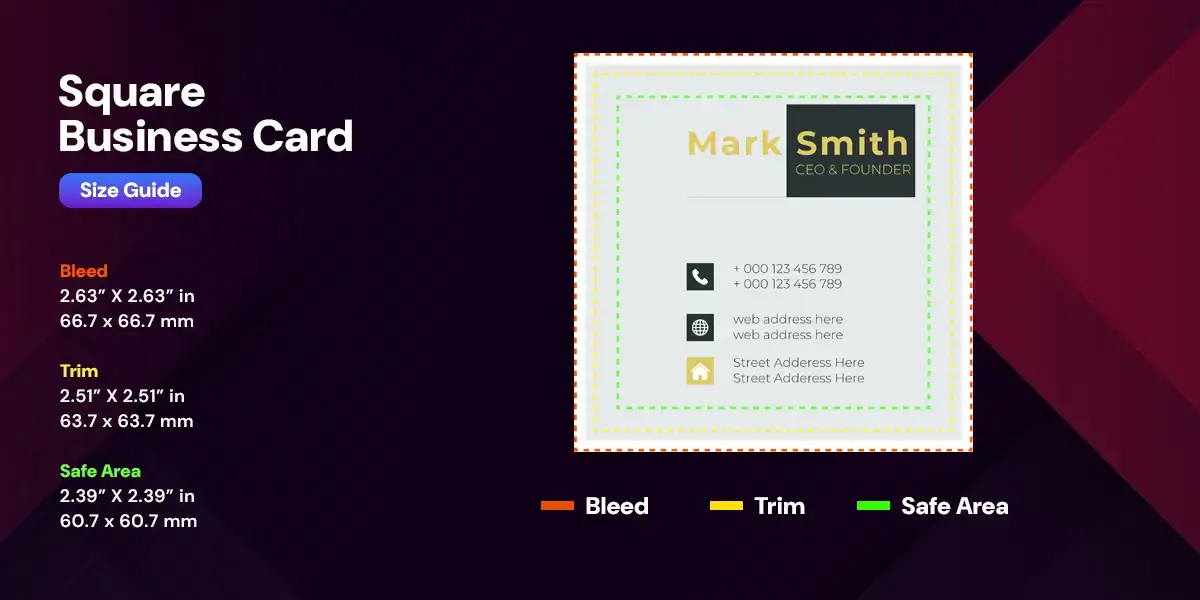
Square business cards are ones that have the same length and breadth. They are a creative and modern alternative to standard rectangular business cards. Square cards are distinctive, therefore more noticeable, especially in networking environments where hundreds of regular cards are handed out. Because they are so noticeable, they contribute to branding efforts.
For square cards, the most common dimensions are 2.5 x 2.5 inches (6.35 x 6.35 cm). Some providers also offer smaller options like 2 x 2 inches or slightly larger like 2.55 inches and larger ones such as 6 x 6 cm. Regardless of what size you choose, keep a bleed area of approx. 1/8 inch (3mm) on all sides. Ensure that all the critical text and logos are aligned within a safe zone in the card's final cut size.
-
Custom Card Sizes/Shapes
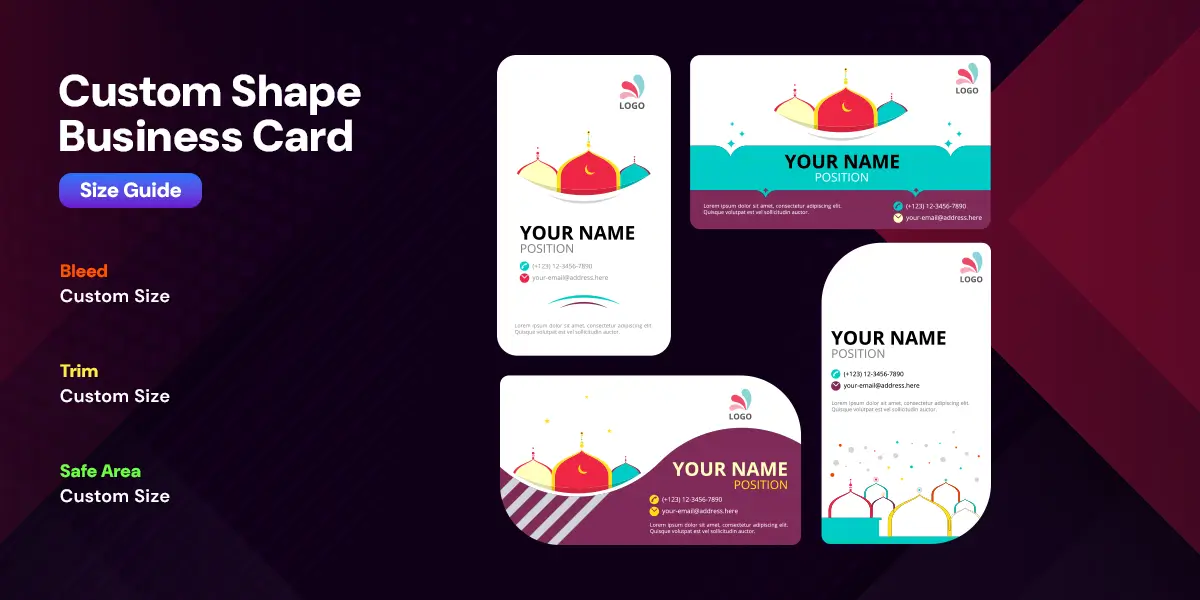
Modern businesses use custom business cards with unique design elements to stand out from the crowd. These days, custom cards measuring 3.5″ x 4″ are becoming quite popular. Such cards can be folded to 3.5” x 2”. With this foldable business card, you would not only get adequate space to put your brand messages across, but you would also be able to fit it in normal business card holders.
Custom shapes add an element of uniqueness to your card. They give you an edge over your competitors as you get have endless possibilities for branding. For example, if you are the owner of a coffee shop, you may go for a coffee-cup-shaped business card. Similarly, if you have a car-rental business, you may go for a car-shaped business card.
Before choosing which custom business card design to print, discuss two important things with the printer- print feasibility and printing cost. The printer should be able to print your design at an affordable rate.
Business Card Design Tips
- Design the card for your target audience and industry.
- Ensure easy readability (clear font style and size and proper contrast).
- Include only the most crucial information (your name, job title, company name and contact details).
- Leave sufficient blank space so receivers can, for example, jot down additional information about you.
- Always proofread the content before you send the business card design for printing.
Conclusion
You may choose cards of diverse shapes and sizes, but selecting the right business card dimensions ensures effective branding and functionality. Standard sizes are practical, while custom and unique shapes help you stand out, but they come with their own challenges. Always consider alignment, bleed area, card-holder compatibility, printing costs and printer requirements when designing. To create a card that reflects your brand, work with a professional graphic designer for print-ready formats.

